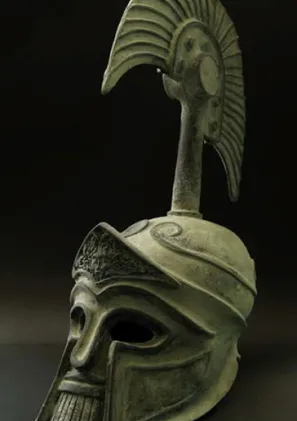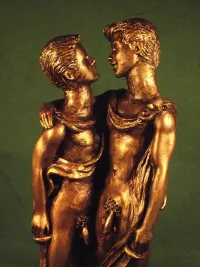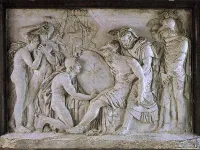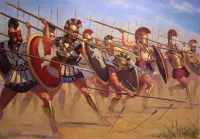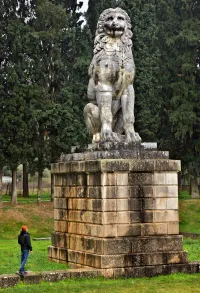Biography
Circa 378 BCE - Circa 338 BCE
The Sacred Band of Thebes, a troop of soldiers that consisted of 150 gay male couples, formed the elite force of the Theban army in the 4th century BC. The rationale behind the Band’s composition was that lovers would fight more fiercely and cohesively than strangers with no ardent bonds. Theban general Pelopidas formed these couples into a distinct unit – the "special forces" of Greek soldiery – and the forty years of their known existence (378–338 BC) marked the pre-eminence of Thebes as a military and political power in late-classical Greece. The Sacred Band fought the Spartans at Tegyra in 375 BC, vanquishing an army that was at least three times its size. It was also responsible for the victory at Leuctra in 371 BC that established Theban independence from Spartan rule and laid the groundwork for the expansion of Theban power. Their only defeat came at the Battle of Chaeronea (338 BC), against Philip II of Macedon and his son, Alexander the Great. It is written that Philip, after the fight, took a view of the slain; coming upon the place where the three hundred that fought his phalanx lay dead together and, understanding that it was the band of lovers, he wept. Around 300 BC, the town of Thebes erected a giant stone lion on a pedestal at the burial site of the Sacred Band that still stands today.
Circa 378 BCE - Circa 338 BCE
The Sacred Band of Thebes, a troop of soldiers that consisted of 150 gay male couples, formed the elite force of the Theban army in the 4th century BC. The rationale behind the Band’s composition was that lovers would fight more fiercely and cohesively than strangers with no ardent bonds. Theban general Pelopidas formed these couples into a distinct unit – the "special forces" of Greek soldiery – and the forty years of their known existence (378–338 BC) marked the pre-eminence of Thebes as a military and political power in late-classical Greece. The Sacred Band fought the Spartans at Tegyra in 375 BC, vanquishing an army that was at least three times its size. It was also responsible for the victory at Leuctra in 371 BC that established Theban independence from Spartan rule and laid the groundwork for the expansion of Theban power. Their only defeat came at the Battle of Chaeronea (338 BC), against Philip II of Macedon and his son, Alexander the Great. It is written that Philip, after the fight, took a view of the slain; coming upon the place where the three hundred that fought his phalanx lay dead together and, understanding that it was the band of lovers, he wept. Around 300 BC, the town of Thebes erected a giant stone lion on a pedestal at the burial site of the Sacred Band that still stands today.
Demography
Demography
Gender Male
Sexual Orientation Gay
Gender Identity Cisgender
Ethnicity Caucasian/White
Nations Affiliated Greece
Era/Epoch Antiquity/Ancient History (beginning of recorded history-476 CE)
Field(s) of Contribution
Military
Commemorations & Honors
Sacred Band of Thebes Lion of Chaeronea Monument
Demography
Gender Male
Sexual Orientation Gay
Gender Identity Cisgender
Ethnicity Caucasian/White
Nations Affiliated Greece
Era/Epoch Antiquity/Ancient History (beginning of recorded history-476 CE)
Field(s) of Contribution
Military
Commemorations & Honors
Sacred Band of Thebes Lion of Chaeronea Monument
Resources
Resources
Resources
